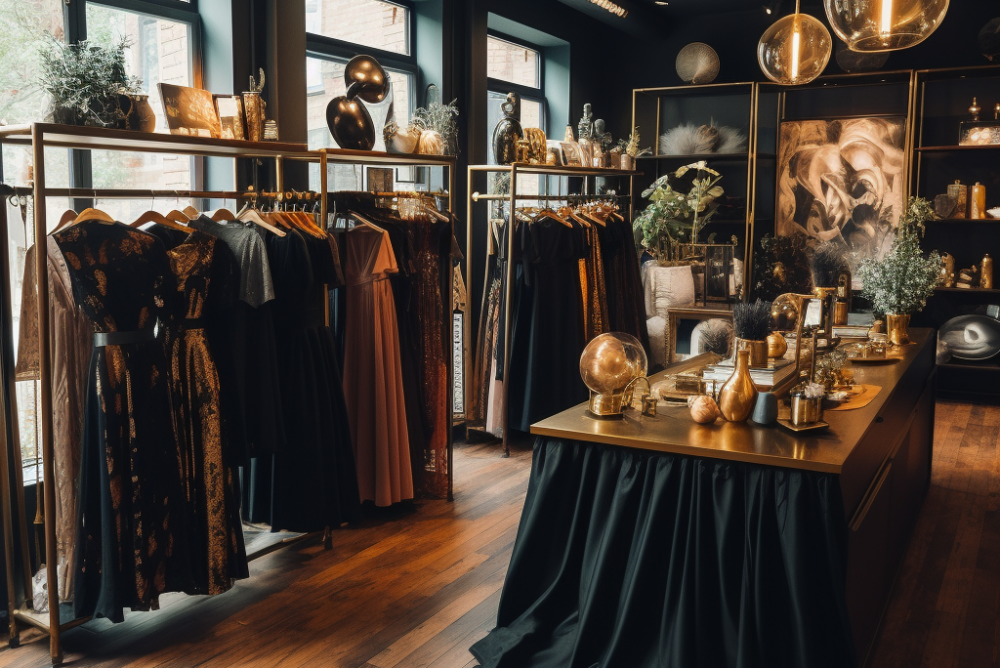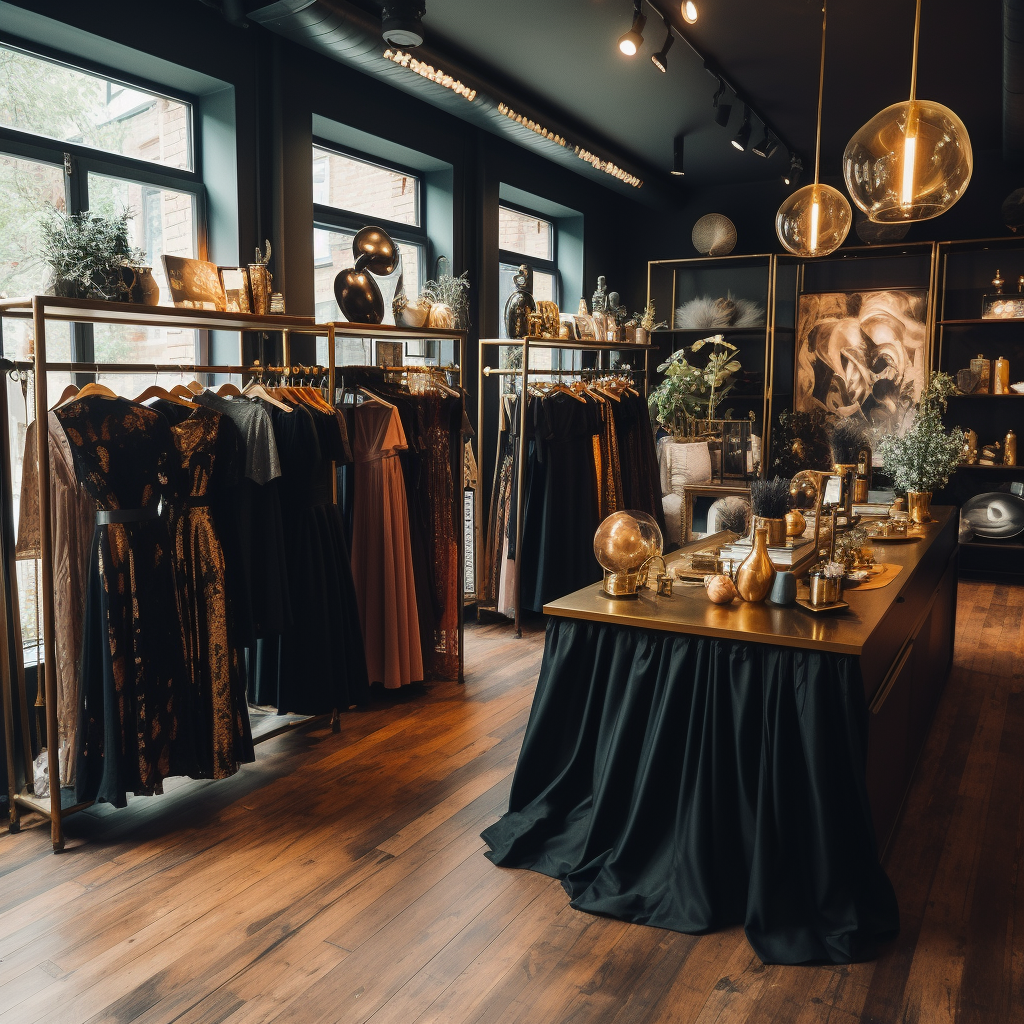Online vs Offline Clothing Startups: A Comprehensive Guide


The clothing industry has always been a vibrant and evolving sphere, with a smorgasbord of opportunities for entrepreneurs. With the advent of technology and shifts in consumer behavior, startups now have multiple avenues to sell their products. This article delves into the world of clothing startups, specifically comparing the online and offline models as they stand in 2024.
We'll dissect the advantages, disadvantages, key considerations, and real-world examples of both online and offline clothing startups, shedding light on the decision-making process for aspiring entrepreneurs. Furthermore, we'll explore the current trends in 2024, and how they are impacting the clothing startup space.
This comparison is not merely academic. It's a practical guide that aims to provide a comprehensive understanding of the pros and cons of selling clothing online and offline. The ultimate goal is to help potential entrepreneurs make informed decisions about their startup journey.
Online Clothing Startups: An Overview
In the last few years, the fashion sector has seen a significant shift towards online commerce. The convenience of shopping from home, broader selections, and the ability to compare prices have all contributed to the popularity of online clothing startups.
Advantages of Online Clothing Startups
Global Reach: Online platforms allow startups to reach global customers, not limited by geographical boundaries. This is a significant advantage for niche brands that cater to specific tastes, as they can connect with customers worldwide.
Lower Startup Costs: Unlike a physical store, an online startup doesn't require a prime location or elaborate store setup. This can significantly reduce the initial investment.
Ease of Scaling: Online startups can easily scale up or down based on demand. They aren't constrained by physical space or location-specific demand.
Data Collection: Online platforms offer the ability to track customer behavior and preferences, enabling more targeted marketing efforts.
Disadvantages of Online Clothing Startups
Customer Trust: Building customer trust can be challenging, particularly when customers cannot physically see or try on the clothes. High-quality images and accurate descriptions are critical but may not fully eliminate this barrier.
Returns and Logistics: Online clothing startups often face high return rates. Additionally, managing logistics and ensuring timely deliveries can be complex and costly.
Competition: The online space is saturated, making it difficult for startups to stand out and attract customers.
Offline Clothing Startups: An Overview
Traditional brick-and-mortar stores continue to hold a significant place in the world of fashion despite the surge in online shopping. They offer a tangible shopping experience that online platforms are yet to replicate fully.
Advantages of Offline Clothing Startups
Personalized Experience: Physical stores offer a personalized, tactile shopping experience. Customers can touch, wear, and assess the garments in person, leading to potentially higher satisfaction levels.
Immediate Gratification: Unlike online shopping, where customers must wait for their orders to be delivered, offline shopping offers immediate gratification. Customers can walk away with their purchases right after making a decision.
Brand Presence: A physical store in a prime location can boost a brand's visibility and credibility. It provides a space for customers to engage directly with the brand and its products.
Disadvantages of Offline Clothing Startups
High Overheads: Rent, utilities, store setup, staff salaries - the costs of running a physical store can be substantial. These expenses can pose a significant challenge, particularly for startups with limited budgets.
Limited Reach: Unlike online platforms, physical stores have a limited geographical reach. They mostly cater to local customers unless they become big enough to warrant a visit from out-of-town shoppers.
Inventory Management: Managing inventory in a physical store can be complex and space-consuming. It also involves a risk of unsold inventory, which could lead to financial losses.
Comparing Online and Offline Clothing Startups
Having explored the dynamics of online and offline clothing startups separately, let's now compare them head-to-head on several key parameters.
Cost Considerations
Online: The costs of starting an online clothing business are generally lower. There's no need for a physical store or large initial inventory, and the cost of creating a website has become increasingly affordable.
Offline: In contrast, offline startups have higher startup costs, including rent, store setup, and staff salaries. However, they can start making sales immediately after opening, which isn't always the case with online startups.
Customer Reach and Interaction
Online: Online startups have the advantage of global reach. However, building meaningful customer relationships can be challenging due to the lack of face-to-face interaction.
Offline: Offline startups have a limited geographical reach but can offer a more personalized customer experience. They have the opportunity to build strong relationships with their customers, which can result in repeat business.
Logistics and Inventory Management
Online: Online startups often deal with complex logistics and high return rates. However, they also have the advantage of easily scaling their inventory to match demand.
Offline: Offline startups face challenges in inventory management, especially when space is limited. They must also deal with unsold inventory, which can lead to financial losses.
Marketing Strategies
Online: Digital marketing, including social media, email marketing, and SEO, are critical for online startups. They must also work hard to build customer trust.
Offline: Offline startups can rely on traditional marketing methods, including local advertising and in-store promotions. Their physical presence can also help to build trust and brand recognition.
Understanding these comparisons can help entrepreneurs make informed decisions about which model is best suited to their vision, resources, and target market.
Real-world Examples of Successful Online and Offline Startups
To further paint the picture, let's look at some real-world examples of successful clothing startups that have leveraged both online and offline models effectively.
Online Success Story: Everlane
Everlane, a clothing startup that began its journey online, is a prime example of a successful online clothing startup. Known for its radical transparency, Everlane provides customers with detailed cost breakdowns for each product, showcasing their commitment to fair pricing. Their online-native approach allowed them to reach a wide customer base and establish a strong digital presence.
Offline Success Story: Warby Parker
Although primarily an eyewear brand, Warby Parker's offline strategy is worth noting for clothing startups. Starting as an online retailer, Warby Parker recognized the value of physical stores and began opening boutique-like showrooms. These stores have become an essential part of their business, allowing customers to try on glasses and experience the brand in person.
A Blend of Both Worlds: Bonobos
Bonobos started as an online-only retailer but later introduced physical locations known as "Guideshops." Instead of traditional stores, these are showrooms where customers can try on clothes and place orders to be delivered to their homes. This model allowed Bonobos to offer the best of both worlds, combining the convenience of online shopping with the personal touch of offline retail.
These examples illustrate that the choice between online and offline isn't necessarily binary. A hybrid model, or transitioning from one to the other as the business grows, can also be a viable strategy.
Key Trends in 2024: Impact on Online and Offline Startups
As we navigate through 2024, it's crucial to understand the ongoing trends in the clothing industry and how they're shaping both online and offline startups.
Sustainability: Customers are becoming more conscious of the environmental impact of their purchases. Online startups can cater to this trend by showcasing sustainable options and providing transparency about their production process. Offline startups can use sustainability as a marketing tool, offering in-store recycling programs and selling locally produced items.
Personalization: Personalized experiences are becoming increasingly essential. Online startups can leverage AI and data analytics to tailor product recommendations, while offline startups can offer personal stylists and curated shopping experiences.
Omnichannel Retail: The line between online and offline shopping is blurring. Customers want the ability to research online and then touch and feel the product in-store, or vice versa. Startups that can offer a seamless omnichannel experience are likely to have an edge.
Social Commerce: Social media platforms are playing an increasing role in online shopping. Startups can leverage these platforms to market their products, engage with customers, and even facilitate purchases.
Contactless Shopping: In the wake of the COVID-19 pandemic, contactless shopping has gained popularity. While mostly relevant for offline businesses, it has also pushed online businesses to streamline their delivery and return processes.
These trends underline the need for startups to stay agile and responsive to changes in the market. Regardless of whether they choose an online or offline model, understanding and adapting to these trends will be crucial for their success.
Making the Decision: Online, Offline, or Omnichannel?
The decision to go online, offline, or adopt an omnichannel approach depends on various factors, including the brand's vision, target audience, available resources, and industry trends.
Online: An online model may be suitable for startups targeting a global audience, those with limited resources to invest in a physical store, or for brands offering products that are easy to ship and have low return rates. It's also a good choice for startups aiming to leverage data analytics for personalized marketing.
Offline: An offline model may work best for startups offering high-end, luxury products that customers prefer to see and try before buying. It's also suitable for businesses targeting a local market or those that can benefit significantly from the personal touch and immediate gratification offered by physical stores.
Omnichannel: An omnichannel approach, combining both online and offline elements, may be ideal for startups aiming to offer the most flexible and seamless shopping experience to their customers. This model allows customers to choose their preferred shopping method, which can enhance customer satisfaction and loyalty.
In making this decision, entrepreneurs should also consider the current trends impacting the clothing industry, such as the rising importance of sustainability, personalization, and social commerce.
It's important to note that the chosen model isn't set in stone. As the business evolves, startups can reconsider their strategy and make changes as needed. For instance, an online startup might decide to open physical stores once they've built a strong customer base, or an offline startup might establish an online presence to reach a wider audience.





-500x500.jpg)
-500x500.jpg)
-500x500.jpg)
-500x500.jpg)
-500x500.jpg)